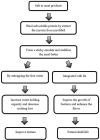Development of strategies to manufacture low-salt meat products - a review
- PMID: 35530408
- PMCID: PMC9039953
- DOI: 10.5187/jast.2022.e16
Development of strategies to manufacture low-salt meat products - a review
Abstract
Urbanization is usually followed by changes in eating habits, with a specific trend toward the consumption of ready-to-eat products, such as processed foods. Among the latter, meat products are known contributors to high dietary sodium owing to salt addition. Salt plays an essential role in maintaining the quality of meat products in terms of acceptability and safety. However, an excessive salt intake is linked to high blood pressure and cardiovascular diseases. Hence, several studies have been competing for the discovery of salt alternatives performing in a similar way as common salt. A number of replacements have been proposed to reduce salt consumption in meat products while taking into account consumer preferences. Unfortunately, these have resulted in poorer product quality, followed by new adverse effects on health. This review addresses these recent issues by illustrating some established approaches and providing insight into further challenges in developing low-salt meat products.
Keywords: Low-salt meat products; Low-sodium meat products; Meat products; Natural salt replacers; Salt alternatives; Salt modifying; Salt reduction.
© Copyright 2022 Korean Society of Animal Science and Technology.
Conflict of interest statement
No potential conflict of interest relevant to this article was reported.
Figures
References
-
- Gokirmakli C, Bayram M. Future of meat industry. MOJ Food Process Technol. 2017;5:232–8. doi: 10.15406/mojfpt.2017.05.00117. - DOI
Publication types
LinkOut - more resources
Full Text Sources



